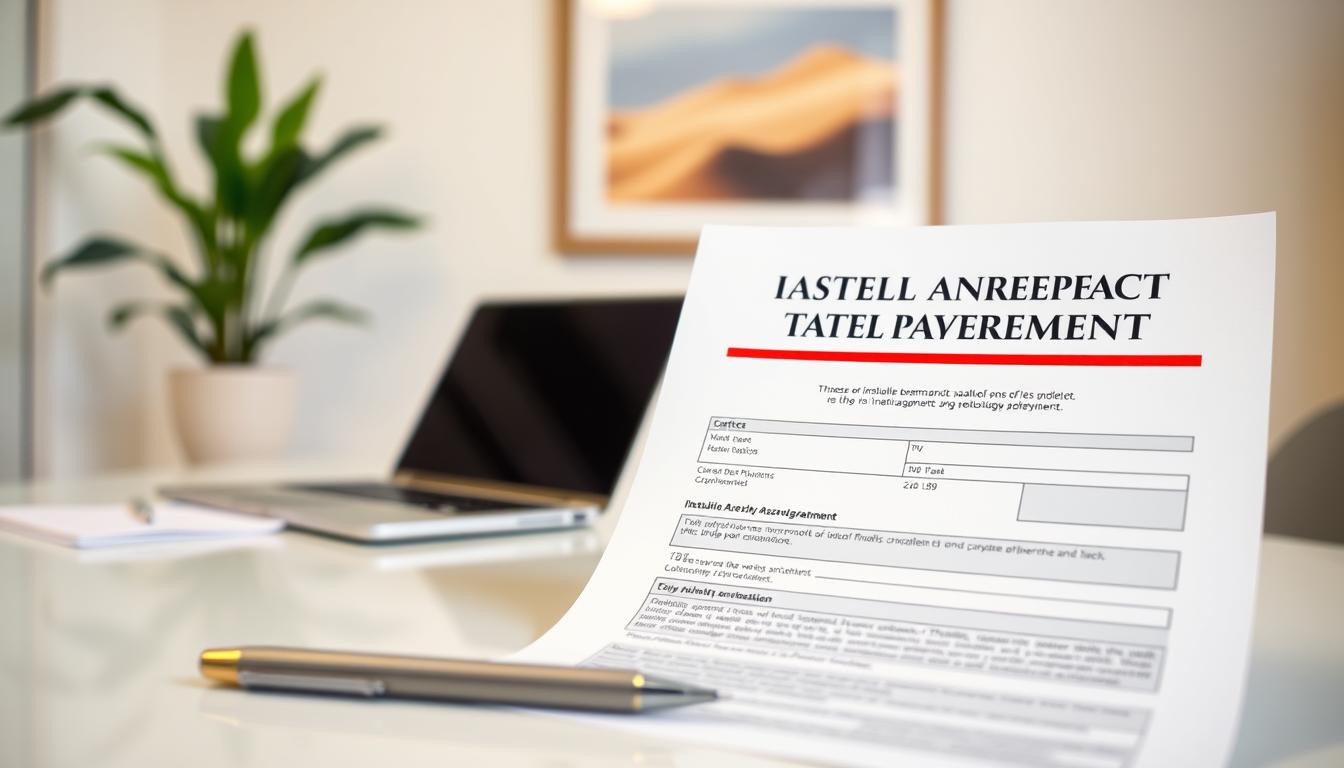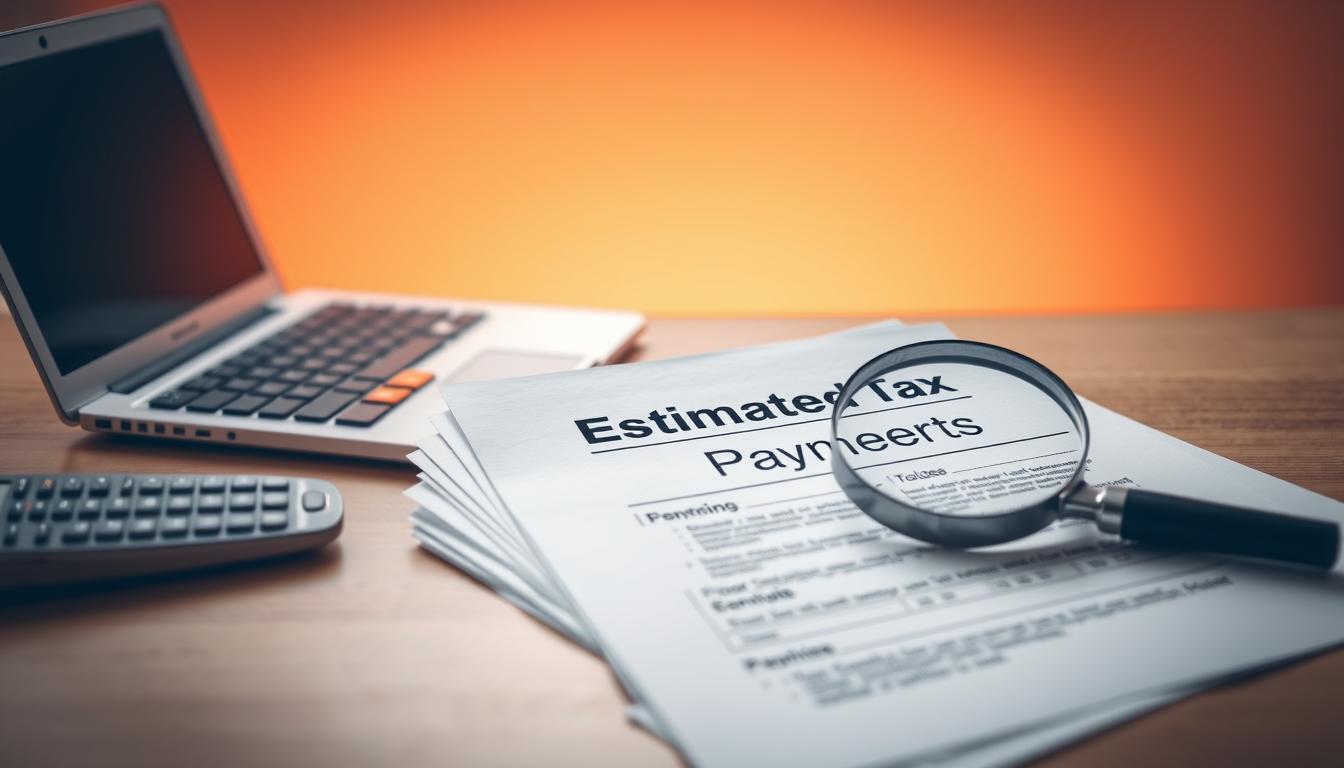You may have felt that heavy knot in your chest when a missed deadline turns into more debt. That moment when a late filing or unpaid balance starts growing with interest can feel personal and unfair.
You can act now with clear steps that stop small mistakes from becoming big tax problems. The IRS adds monthly penalties for late filing and late payment, plus daily interest that increases the amount you owe over the year.
This brief guide shows practical moves for filing, withholding adjustments, estimated tax planning, and using installment agreements to cut the failure-to-pay rate.
Key Takeaways
- Meet critical filing dates to limit monthly penalties and interest.
- Use withholding or quarterly payments under pay-as-you-go rules.
- Consider an installment agreement to lower the failure-to-pay rate.
- Document reasonable causes if you request penalty relief.
- Adjust withholding during the year to prevent underpayment charges.
Understanding IRS Penalties, Interest, and Your Goal at the present time
“Stop new charges by meeting the next filing or payment date.”
Your immediate goal is simple: halt fresh penalty and interest accrual by filing the return or making tax payments on the next date. Missing that date starts monthly penalty math and daily interest that quickly raises the amount you owe.
IRS penalty rules are straightforward in form. A failure-to-file penalty is generally 5% per month up to 25% (with a minimum if a return is more than 60 days late). Failure-to-pay runs about 0.5% per month, capped at 25%, and that rate drops to 0.25% if you enter an installment agreement.
Interest accrues daily on unpaid taxes and on penalties until paid. The IRS updates the interest rate quarterly, so delays across the year can be costly.
“Interest keeps growing daily; penalties stop at a cap, but interest does not.”
- Withholding on W‑2s and 1099s is usually treated as paid evenly across the four due dates unless you elect actual dates.
- The IRS often computes underpayment charges, but you may need to calculate them for a waiver or when annualizing income.

File and Pay on Time to Prevent Immediate Penalties
Missing the April date often starts a cascade of monthly charges that raise your tax bill quickly. Act early: filing or submitting a valid extension stops the worst short‑term charge.

Use an automatic filing extension to the October 15 return due date
You can request an automatic extension to October 15 by filing Form 4868 on or before the April deadline. Remember an extension buys filing time but not extra time to pay the tax you owe.
Pay as much as you can by the April date. That reduces monthly interest and the portion of any failure‑to‑pay charge applied to the unpaid amount.
Know the failure-to-file and failure-to-pay rates and monthly caps
The failure‑to‑file penalty is normally 5% of unpaid tax for each month or part of a month, up to 25%. A separate failure‑to‑pay penalty runs about 0.5% per month, also capped at 25%.
When both apply in the same month, the combined charge generally cannot exceed 5% per month. Setting up an installment agreement lowers the failure‑to‑pay rate to 0.25% while the plan is active.
- File your tax return or Form 4868 by the April due date to avoid the steep 5% monthly charge.
- Pay as much as possible by April to shrink interest and lower the unpaid amount subject to penalty.
- Track e‑file and payment confirmations so you can document meeting the return due date and any payment date.
“Filing on time avoids the higher failure‑to‑file charge even when you cannot pay in full.”
Estimated Taxes and Safe Harbors to Avoid the Underpayment Penalty
Quarterly estimated payments keep taxes current as income arrives. The IRS “pay as you go” rule means you must fund tax liability throughout year by withholding or estimated tax.
You generally must make estimated taxes when you expect to owe $1,000 or more after withholdings. Meeting safe harbors stops an underpayment penalty: pay 90% of current-year income tax or 100% of last year’s tax.
If your prior-year AGI exceeded $150,000 (or $75,000 MFS), use 110% of last year. Withholding counts as if paid evenly each quarter, which helps reach the 100 tax shown safe harbor.

- Quarterly estimated tax due dates: Apr 15, Jun 15 (Jun 17 in 2025), Sep 15 (Sep 16 in 2025), Jan 15 next year; weekend/holiday rules apply.
- Coordinate withholding and estimated tax payments to match income patterns and avoid underpayment estimated tax charges.
| Rule | Threshold | When it helps |
|---|---|---|
| Pay 90% current-year | 90% | When income rises midyear |
| 100 tax shown prior year | 100% (or 110%) | Stable income, safer for taxpayers |
| $1,000 rule | $1,000 owed | Determines need for estimated tax payments |
“Pay taxes as income arrives; spread payments so one missed due date won’t trigger underpayment.”
Methods to Calculate and Reduce Underpayment Penalties
When income is uneven, choosing the right calculation method can cut underpayment charges significantly.
Two approved approaches exist. The regular method treats your yearly required amount as four equal installments. This is simple and suits steady pay.

Annualized income using Schedule AI
The annualized income installment method matches installments to when you earned income. Use Schedule AI (Parts I and II) when spikes, bonuses, or capital gains occur late in the years.
Form 2210 workflow and timing
You must compute a penalty on Form 2210 when you request a waiver, claim annualization, or show actual withholding dates lower your amount. Check box C in Part II, compute in Part III, and attach all pages with your return.
Interest rates and daily calculations
The IRS sets quarterly interest rates; the penalty is figured using daily computations. That makes each payment date important for lowering penalty interest and the final tax owed.
- Compare regular vs annualized results before filing.
- Elect actual withholding dates when it lowers the assessed penalty.
- Keep records; the taxpayer bears the burden when using Schedule AI or asking for a waiver.
“Timing and proper form use often reduce both penalty and penalty interest.”
Disaster Relief and Reasonable Cause Abatement
A declared disaster can replace your normal return due date with a revised deadline for many tax obligations.

Federal disaster declarations often extend filing and payment dates for affected taxpayers. The relief typically covers income tax returns, estimated payments, payroll deposits, and some excise taxes that fall inside the relief period.
Federal declaration effects
When a disaster notice applies in your area, the IRS usually publishes an updated due date. That new date becomes the return due date for covered filings in the relief window.
Reasonable cause examples
If the disaster, a serious illness, a house fire, or a death in the immediate family prevented you from filing or paying, the IRS may waive a penalty for reasonable cause.
- Check current IRS disaster declarations to confirm whether your filing and payment dates moved.
- Document how the event directly stopped your ability to file or pay and keep supporting evidence.
- Consider first-time abatement when you filed all required returns and had a clean compliance record for the prior three years.
“Submit a prompt request with timelines and documents tying the missed date to the cause.”
Monitor IRS guidance for location-specific relief and make sure you meet any revised due date so new penalties do not begin once the window closes.
Payment Options to Limit Penalties and Interest Accrual
A prompt payment plan often reduces the monthly rate applied while you repay an outstanding tax balance.
Installment agreements cut the failure‑to‑pay rate from 0.5% to 0.25% per month while the plan is active. Use Form 9465 to request a formal plan and consider automatic debit to stay current. Making a substantial initial payment by the original due date lowers the base on which penalties and penalty interest accrue.
Choose secure electronic methods for tax payments. IRS Direct Pay and EFTPS post immediately and give confirmation. Card processors work too, though fees may apply.

“Paying as much as possible by the deadline shrinks both penalty and interest on your tax bill.”
- Avoid mailing checks without verifying funds; a dishonored check can trigger an extra penalty (2% for checks $1,250+; smaller amounts face $25 or the check amount).
- Align payment timing with cash flow but meet minimums so the agreement stays in good standing.
- Keep receipts and monitor IRS notices so each payment posts correctly.
| Option | Effect on rate | When useful |
|---|---|---|
| Installment agreement (Form 9465) | Failure‑to‑pay drops to 0.25%/mo | When you need structured monthly payments |
| IRS Direct Pay / EFTPS | No check risk; immediate credit | When you want fast posting and confirmations |
| Paper check | Subject to dishonor penalty | Only if funds verified and you accept processing delays |
How to Avoid Penalties and Extra Charges: Step-by-Step
Take immediate steps that match payments with when you actually earn income to lower underpayment exposure.
Adjust withholding or make catch-up estimated tax payments. Increase payroll withholding or send one or more estimated tax payments so you meet safe harbor thresholds: 90% of current-year or 100% (110% for high AGI) of last year. Pay what you can by the return due date and plan the remainder across remaining periods.

Midyear planning: annualize uneven income
When earnings spike, use the annualized income installment method on Schedule AI with Form 2210. That aligns installments with actual receipts and may cut underpayment charges.
Document and request penalty abatement
For first-time abatement, confirm three years of clean compliance. For reasonable cause, assemble evidence—illness, disaster impact, or death—and show you filed required returns and paid or arranged payment.
- File on time and pay what you can now.
- Adjust withholding or make catch-up estimated tax payments this quarter.
- Use Schedule AI with Form 2210 when income is uneven.
- Keep payment confirmations and supporting records for abatement requests.
“Documented facts and timely compliance improve your chances for relief.”
| Action | When | Benefit |
|---|---|---|
| Increase withholding | Any payroll period | Immediate reduction in tax liability |
| Make catch-up estimated payment | Before next quarter due date | Meets safe harbor; cuts underpayment |
| Use Schedule AI (Form 2210) | Midyear or at filing | Aligns payments with income spikes |
| Request abatement | After compliance | Possible removal of assessed penalty |
Advanced Compliance: Accuracy-Related Penalties and Staying Audit-Ready
An understatement of income or careless reporting can trigger a serious accuracy-related penalty under IRC §6662.
The statute often imposes a 20% penalty on the portion of any underpayment caused by negligence or a substantial understatement of income tax. This penalty is separate from failure-to-file or failure-to-pay charges and can arise from omitted income, overstated deductions, or improper credits.
Keep crisp records that tie each figure on your return back to source documents. A well-organized workpaper file helps you respond quickly if the IRS questions your tax liability.
Act early if you find an error. Amending a return and adjusting estimated payments can limit underpayment exposure and show good faith.
- Reconcile reports with bank statements, W-2s, and 1099s.
- Use proper form schedules for complex items and get expert review when risk is high.
- Keep digital copies and a timeline for correspondence across years.
“Strong documentation and prompt correction reduce audit friction and lower the chance of a steep penalty.”
| Risk | Action | Benefit |
|---|---|---|
| Omitted income | Reconcile 1099s; amend return | Limits underpayment |
| Overstated deduction | Gather receipts; obtain advisor review | Reduces accuracy issues |
| Repeated errors | Implement controls; retain workpapers | Lower audit risk in future years |
Conclusion
A clear endgame keeps your tax bill stable and reduces surprise assessments later.
File or extend by the deadline and pay what you can. That stops new interest and lowers the base for any penalty. If full payment is not possible, set up a payment plan quickly.
Use safe harbors and timely estimated payments so underpayment exposure stays low. Monitor disaster notices and gather evidence for reasonable cause relief when applicable.
Keep neat records for each return, confirm every payment, and revisit withholding as income changes. When issues are complex, consult a qualified tax professional to limit tax penalties and manage your balance with confidence.